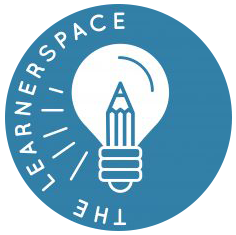Big Data and Digitization

Applying Big Data to education poses a significant challenge, not only in terms of the first obvious hurdle, how to collect data that is relevant from an educational point of view, but, most significantly, on how to make sense of that data so that it provides meaningful insights regarding learning patterns, both in general terms as well as possible school objectives or focused interventions.
Data analysis has long been a standard practice in many schools, within various forms and names, all of them based on the same principle: how to take data from common assessments, whenever possible formative assessments, and take into account results from these evaluations to feed back in an iterative cycle seeking to attain previously formulated SMART goals. The big problem with this tested and tried method is precisely that it bases itself on numerical analyses of standardized data, thus almost invalidating the very objective set out to accomplish by measuring student performance and not necessarily learning. The variables that are quantifiable in education are clearly associated with testing and outcomes that clearly do not reflect learning in the current and future model.
The promise of Big Data, as such, looms large: how to collect information that is spontaneously generated, and in such a volume that eliminates the bias of testing, but so far it has stumbled against the same roadblocks, how to measure the effectiveness of the learning process through hard data without incurring in standardized testing.
Learning Analytics: a primer on data and relevant learning.
In order to explore how information garnered can yield relevant insights about the learning process, in ways that can be generalized and built into a software platform, it is necessary to work back from some of the indisputable principles of the new knowledge paradigm, that despite the frenetic pace of change that is intrinsic to technological developments, will constitute the irreversible building blocks of the school of the future.
Some of these principles are:
- Technology should be utilized as a positive disruption to learning, through software, games, simulations and other applications that target increased student engagement.
- There is a very serious risk – as evidenced by the use of LMS to that effect – of digitizing the traditional model, by utilizing the same lesson plans and assessment schemes by using the digital medium.
- Social networks should be capitalized to update learning as a continuous process and provide sustained networked learning opportunities, but they can also become a major distraction factor.
- Technology should be the main catalyst to learning, by allowing learners of all ages to tap into unlimited sources of information, but utilizing search engines for research purposes.
- Technology can also be a unique gateway to exercise higher order skills such as creativity and critical thinking.
Based on these principles outlined above, the ensuing challenge is to think how the data supplied by the system can eventually be turned into some sort of metric that measures engagement and the extent of the fit between school practices.
The Learnerspace Big Data and Digitization service
Our team of consultants will work with school leaders in analyzing existing information from LMS and other software at the school, and work to both delve into historic data to gain insights conducive to improving educational practice, and, more importantly, it would work with the school team to develop a new framework to be able to gather data in a format that renders it usable for the above purposes, starting a true Learning Analytics program at the school. Some of the possible analyses involve:
- Direct relationship with schedule. In a standard format, users should be able to upload location and schedule so that all relevant information can be correlated with the organization’s schedule. This will allow, in a school, for example, to obtain information by class, course or teacher, day of the week, classroom, departments. Users should be able to directly upload an Excel or CSV file within a specified format and relate the information to access points in classrooms and times within the school schedule.
- Standard indexes of engagement and educational alignment. The system will be built in with some standard metrics for engagement, and alignment to a 21st Century model. These will consist of a numeric index that takes into account the data obtained, which will be weighted as per an analysis to be made.
- Allow users to create their own similar indexes by weighing in variables and information supplied by the system. In this way, every school or educational organization can create their own metrics based on their particular learning objectives and also being able to measure, over time, the effectiveness of certain learning strategies or interventions.
- Provide movement patterns for students. Through geographical access during the day, a map of student movement can also be produced providing patterns of how students utilize their devices in schools.
- Tracking through access points of al devices, including cell phones, and obtaining data directly from routers. Being able to map and monitor internet access from all devices in the building may extend these capabilities substantially.
The Learnerspace consultants will work directly with the school leadership team to develop a comprehensive plan for capturing and analyzing relevant information for learning within what can constitute groundbreaking applications of Big Data to education.
